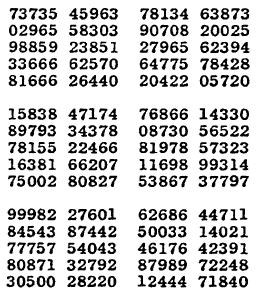

Here’s a simple one for 31 bit numbers, implemented in C. PRNG algorithms are usually written at the machine level for speed. That is the nature of deterministic arithmetic expressions. If a pseudo random number generator (PRNG to use the usual abbreviation), generates a prior value, then you’re hung in a cycle and will repeat the same series of pseudo-random numbers again. If I have replacement, then I can get the same value in different drawings if there is no replacement, once I have picked a value it does not occur again in the sample. When I draw a ball out do I keep it, or put it back in the urn? Since I seldom have a bunch of balls in an urn, I like to refer to these as “shooting dice” or “cutting cards” instead. This analogy pops up in every book on probability or introduction to statistics. These terms come from the rather classic model of drawing numbered balls from an urn. First of all, there are two kinds of random samples sampling with replacement and sampling without replacement.

There’s a fundamental mistake in just accepting any pseudo-random number generators as being truly random. Most SQL server programmers only know about the RAND() function and never think further about it after all, Microsoft wrote it: Right? Think of this as another one of my “aggregation” articles. Randomness is a good topic in itself, but I want to talk instead about getting a random sample out of a table in a database. John von Neumann was not against the use of pseudo-random numbers, but he thought that you will be very, very careful about using them (“Various Techniques Used in Connection with Random Digits” by John von Neumann in Monte Carlo Method (1951) edited by A. “Anyone who considers arithmetical methods of producing random digits is, of course, in a state of sin.


 0 kommentar(er)
0 kommentar(er)
